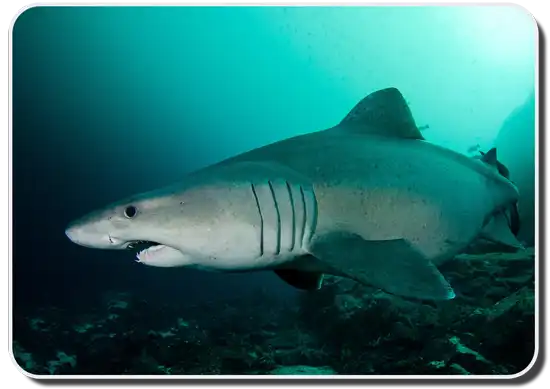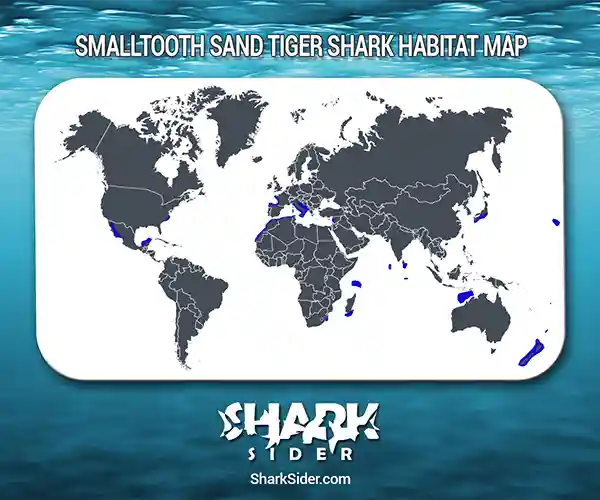 The smalltooth sand tiger shark, or the bumpytail ragged-tooth shark, is a mackerel shark found in the deep seas.
The smalltooth sand tiger shark, or the bumpytail ragged-tooth shark, is a mackerel shark found in the deep seas.
Smalltooth Sand Tiger Shark Scientific Classification |
|
| Kingdom | Animalia |
| Phylum | Chordata |
| Class | Chondrichthyes |
| Order | Lamniformes |
| Family | Odontaspididae |
| Genus | Odontaspis |
| Scientific Name | O. ferox |
Description
These are very bulky sharks, with a rounded snout and medium-sized eyes. There are 48–56 rows of teeth in the upper jaw and 36-46 in the lower one. The fins of these sharks are angular and broadly shaped. They consist of a first dorsal fin larger than the second and an asymmetrical caudal fin with a longer upper lobe.
Smalltooth sand tiger sharks tend to be gray to grayish brown dorsally while being white ventrally.
Where do they live
Map Of TheSmalltooth Sand Tiger Shark’s Habitat

This shark is scattered throughout the globe, with sightings in Algeria, Australia, Brazil, Cabo Verde, Chile, Cocos Islands, Colombia, Costa Rica, Croatia, Cyprus, Ecuador, France, Greece, Indonesia, Israel, Italy, Japan, Lebanon, Madagascar, Maldives, Malta, Mexico, Morocco, New Caledonia, New Zealand, Portugal, South Africa, Spain, Sri Lanka, Syrian Arab Republic, Taiwan, Tanzania, Tunisia, Turkey, USA, and Western Sahara.
They are deepwater sharks often caught at depths of 2,900 ft at rocky outcrops or coral reefs.
Behavior
Hunting
Due to their small dentition, these sharks feed on bony and cartilaginous fish and invertebrates like shrimps and squids.
Social
These sharks have been spotted swimming either singly or in a group of five individuals.
Reproductive
While no pregnant smalltooth sand tiger sharks have ever been observed, it is estimated that they are ovoviviparous, and the newborn sharks’ size is around 3.3–3.6 ft.
Sexual maturity is observed in males when they are 6.6–8.2 ft long and in females when they are 9.4–11.5 ft long.
Adaptations
They have a large liver, allowing them to remove buoyant while resting.
Interactions with humans
These sharks do not behave aggressively towards divers and are pretty docile. The IUCN lists this shark as “Vulnerable” or “VU” due to its occasional presence in shallow water, indicating that human activities have begun to harm it.
